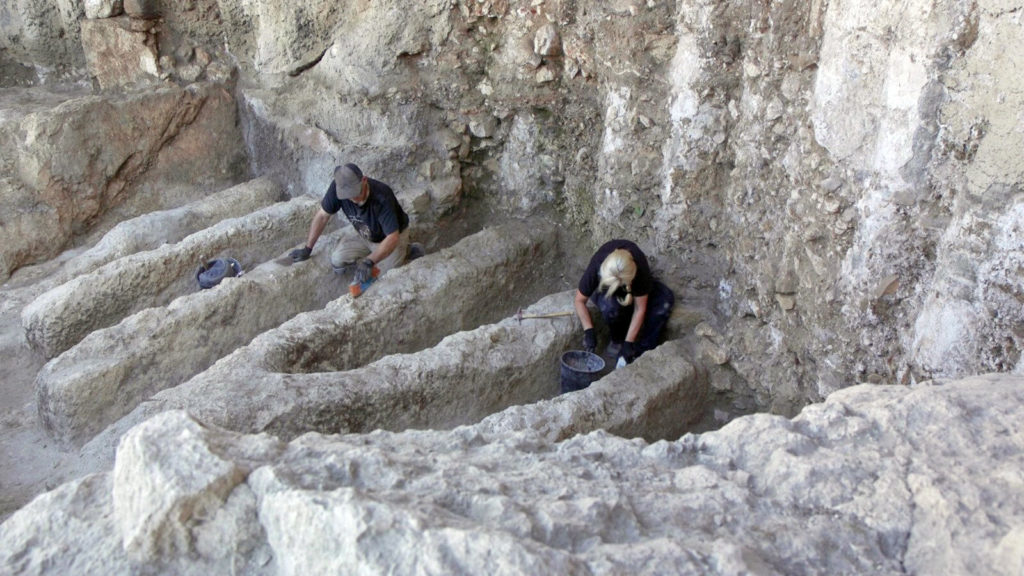
In a remarkable archaeological discovery in Jerusalem, experts have revealed a series of enigmatic channels that date back a stunning 2,800 years to the reigns of King Joash and Amaziah.
This extraordinary discovery marks the very first instance of such structures being unearthed within the borders of Israel. The Israel Antiquities Authority (IAA) made a significant announcement on Wednesday (August 30th, 2023), shedding light on these remarkable installations.
The underground passageways were discovered within a national park that houses the renowned City of David archaeological site. Most scholars widely believe this site to be the original settlement location of Jerusalem.
Ancient channels in Jerusalem
The purpose of the grooves carved into the bedrock in ancient Jerusalem remains a mystery, as stated by the Israel Antiquities Authority and Tel Aviv University.
Although these grooves were utilized by the ancient Jerusalemites, the exact nature of the substance they were intended for remains unclear. Recent examination and forensic testing of the channels indicated that they were not utilized for animal slaughter, as no traces of blood were found.
Moreover, the design of the ducts suggests they were not constructed to carry significant amounts of water. The function and significance of these grooves continue to intrigue researchers and archaeologists.
Unique structures and their link to the palace
The purpose of these unique structures in Israel lacks any known parallels, leaving researchers only able to speculate about their function.
Positioned prominently, their central location suggests a link to the economy of the palace or temple during the era they were in use. These enigmatic structures were operational during the period corresponding to the existence of the city’s First Temple.
Recent excavations by the Israel Antiquities Authority and Tel Aviv University within the City of David National Park have revealed two installations just slightly more than thirty feet (approximately ten meters) apart. These installations could potentially be components of a larger integrated structure.
While distinct variations can be observed in crafting and structuring the two channels, a notable similarity emerges, as confirmed by the Israel Antiquities Authority (IAA). Despite the contrasting approaches in their creation, these channels ultimately reveal a commonality that underscores their significance.
Details of the channels
The channels are characterized by their knee-deep depth and are arranged in two distinct clusters positioned approximately ten meters apart. Crafted from meticulously carved rock, this discovery in Jerusalem boasts dimensions of around thirty centimeters in width and fifty centimeters in height.
Archaeologists Find Mysterious 2,800-year-old Channels Near Temple Mount in Jerusalem But what purpose they served remains a riddle pic.twitter.com/UUJ9Uayez3
— David Hanrahan (@uchroniaUtopia) August 31, 2023
Intriguingly, they lack any connections to other water sources, and their design and function appear to deviate from typical drainage or sewage disposal purposes.
“The mystery only grew deeper when we found the second installation to the south,” shared Yuval Gadot from Tel Aviv University’s Department of Archaeology and Ancient Near Eastern Civilizations.
“We looked at the installation and realized that we had stumbled on something unique, but since we had never seen a structure like this in Israel, we didn’t know how to interpret it,” Yiftah Shalev, a senior researcher at the Israel Antiquities Authority (IAA), echoed this sentiment, adding, “Even its date was unclear.”
Historical context of the channels unveiled
Researchers have successfully determined the timeframe when these installations ceased to be in use—specifically, at the conclusion of the 9th century B.C. during the reigns of the biblical Judean kings Joash and Amaziah.
The precise location of these ducts was once occupied by a substantial complex encompassing both industrial and residential elements. This history suggests a range of potential purposes for the ducts, including applications in textile manufacturing, food production, and potentially religious ceremonies.
While the discovery of these ducts remains shrouded in mystery, its significance is undeniable. It offers fresh perspectives into the ancient city of Jerusalem and the lives of its inhabitants. This extraordinary find, while enigmatic, is proving instrumental in enhancing archaeologists’ comprehension of Jerusalem’s historical narrative.
See all the latest news from Greece and the world at Greekreporter.com. Contact our newsroom to report an update or send your story, photos and videos. Follow GR on Google News and subscribe here to our daily email!



